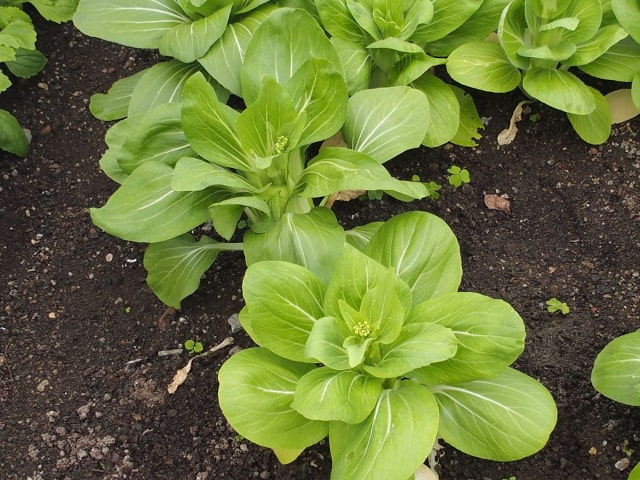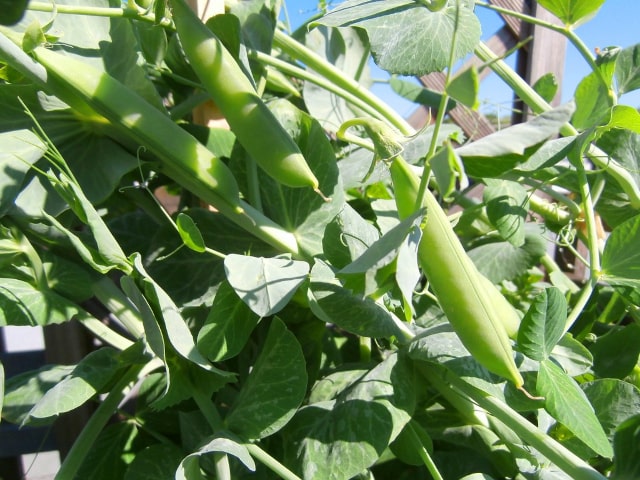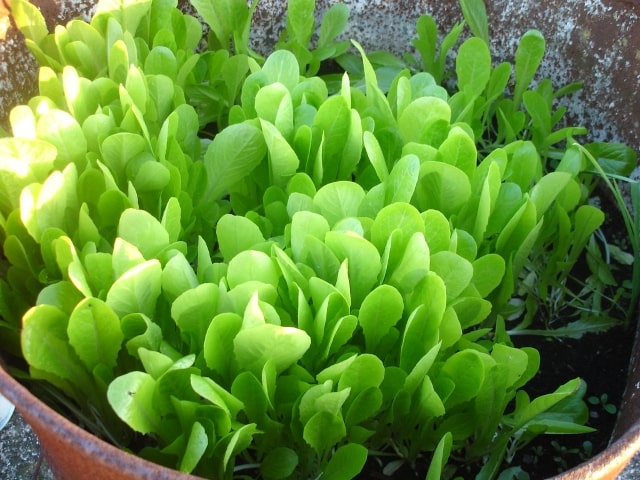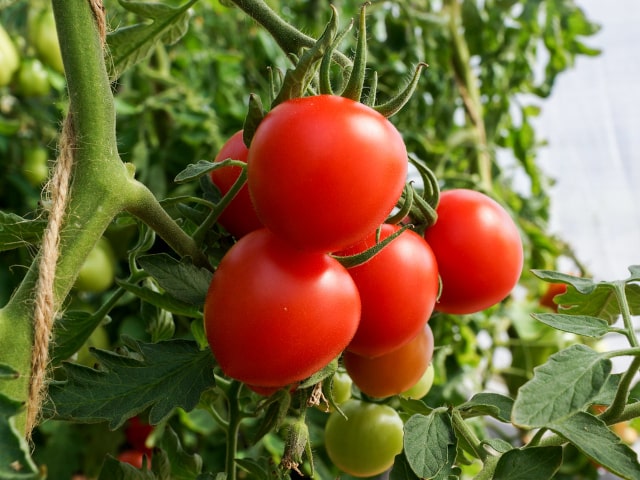
There are many different ways to grow potatoes organically. If you wish to grow potatoes, it's worth noting how to do it properly and with the ebst success. There are many methods you can use to produce the healthy, organic potatoes for your family.
Keep in mind that each method has its pros and cons. What suits for you might not be the same what suits for someone else. That is ok. If in doubt, try different methods to see which one works the best for your individual situation.
The organic growing methods are:
- Raised Bed Method
- Straw Mulch Method
- Hilled Rows Method
- Wood Box Method
- Wire Cylinder Method
- Grow Bag Method
- Garbage Bag Method
Raised Bed Method
To grow potatoes organically using this method, you need to prepare your soil first. Make sure to have a nicely built raised bed. It should be half-filled before you start. You should loosen the soil on the bottom before you plant your potatoes.
Once these preparations are ready, plant seed potatoes on the bottom. Make sure to space the potatoes about 12 inches apart. Plant in all directions to fill the raised bed. Once the planting is done, cover potatoes with 3 inches of coil.
As the potatoes grow, you will need to add more soil until the whole bed is filled to the top. To harvest potatoes easily, remove the sides of the bed (if possible) and it will be easy to reach for the potatoes.
The best thing about this method is that it gives a plentiful harvest. It also tends to produce large potatoes, so it's ideal if you wish to grow a lot of potatoes. This is an excellent method to grow potatoes organically, especially in places where the garden soil is heavy and poorly drained.
There are no big drawbacks with this method, except for one: you will need separate soil to fill the rasied beds, so you need to prepare it in advance.
Straw Mulch Method
To grow potatoes using this method, prepare the soil and then place seed potatoes on the surface. Make sure to space potatoes at least 12 inches apart. Once you're done, cover potatoes with 3 to 4 inches of seed-free straw. Make sure that the straw is loose enough.
As your potatoes grow, make sure to mound more straw around the stems. It's important to create a good layer of mulch around the plant. At the end, you should have a layer that is about foot or more deep.
Advantage to this method is that it conserves soil moisture. It is achieved with the help of the thick mulch layer. This layer of mulch will also prevent weeds from appearing. Another good thing about this method is that it gives and excellent, almost efortless harvest. You don't even have to dig!
A bad thing about this method is that yield is not always plentiful, so it's best to be used on a smaller scale and when you don't need large quantities of potatoes. Another problem are field mice, who can use the straw to get to the crop easily.
Hilled Rows Method
To grow organic potatoes using this method, you need to dig straight trenches. Make sure they are shallow enough and separated 2 to 3 feet to each other.
The soil should be prepared before you start. Once you're done, plant seed potatoes in the trenches, about 12 inces apart. Once you're done, cover them with about 3 inches od soil.
When the potato shoots are about 10-12 inches tall, use a shovel or a hoe to scoop soil from between the rows. Mound the soil against the plants to bury the stams halfway. Repeat this process during the growing season if necessary to keep the tubers covered.
Benefits of this method are the fact there's no soil needed to transport and no containers you need to buy or build. This is a very simple and affordable method of growing potatoes. It's also a very ancient method: farmers have used it for centuries. It is a very useful method for those who want to grow large-scale plantings.
On the other hand, it's important to know that the yield may be limited with this method - it depends a lot on the quality of the soil. In case the soil is very compacted or low on organic matter, it won't produce the best results. If this is the case with your garden it's best to use a different method for growing organic potatoes.
There are many useful and practical ways to grow potatoes organically, and we've already outlined some of them. Remember, the proposed organic methods for growing potatoes are:
- Raised Bed Method
- Straw Mulch Method
- Hilled Rows Method
- Wood Box Method
- Wire Cylinder Method
- Grow Bag Method
- Garbage Bag Method
We already described raised bed, straw mulch and hilled rows methods. Here, we will describe the other methods for growing potatoes organically.
Wood Box Method
This method requires some craftsmanship, but it's very rewarding. To grow potatoes in this way, you need to build a wooden box first. The box should be square in shape and bottomless. You may use wood from discarded pallets if you like. Make sure to build the box in such a way to allow for added slats can be screwed to the sides as the plants grow and you add more soil to the box.
To plant potatoes using this method, you should go the same way as for the raised bed method. As the plants grow, make sure to add more soil on the top. To harvest potatoes easily, remove the bottom slat and remove the potatoes. You can screw the bottom slat again when you finish harvesting your potatoes. Or you may simply tip the box and dump out the contents to harvest potatoes easily.
This is another good method if the garden soil is of poor quality. This method produces a good yield.
The drawback of this method is that it requires some effort and craftsmanship to build the wooden box, not to mention time to construct it.
Wire Cylinder Method
This is another method ideal for crafty people. Use hardware cloth with 1/4 inch mesh to make a cylinder. The cylinder should be about 18 inches in diameter and about 24 inches tall.
To plant potatoes, put several inches of soil on the bottom. After this, put 3 to 4 seed potatoes on the soil and cover them with 3 inches of soil.
Make sure to continue to add soil on top as the potatoes grow. Harvesting is easy: simply lift the cylinder and pull the soil back to get to potatoes.
This method is good for areas with incessant spring rains. Cylinder mesh will provide excellent drainage and it will prevent soil from becoming waterlogged. It's also another good technique if the garden soil is of poor quality.
A bad thing about this method is that it gives a limited yield. It might be because the soil and compost mixture dries up too quickly so the plants don't receive enough moisture.
Grow Bag Method
This is an interesting method for growing potatoes organically. There are many commercial growing bags available. They are typically made of heavy, dense polypropylene.
To grow potatoes using this method, place a few inches of a soil-compost mixture on the bottom of the bag first. After this, plant 3 to 4 seed potato pieces in the bad and cover them with 3 inches of soil.
As the plants grow, add more soil to cover them, until the bag is filled. Harvest is very easy with this method: all you need to do is to turn the bag on the side and empty it.
This is a great method for those who have limited space or no garden to grow vegetables. You can place bags almost anywhere, such as patio or driveway. This is also a great choice for situations where garden soil is of poor quality. Another advantage is that these growing bags can be used over and over again over many seasons. They are typically dark in color so they capture solar head and speed the early growth of your potatoes. Growing bags also make harvest very easy and the yield is very good, concerning the small space the bag takes.
The downside of this technique is the price. Commercial growing bags tend to be expensive (over 10-12 dollars per bag). Also, you will need many bags to get a decent number of potatoes.
Garbage Bag Method
This is a nice alternative to commercial growing bags, and it works in a similar way to the previous method. Instead of a commercial growing bag, you will use a large plastic garbage bag. Follow the same instructions as the ones provided for the growing bags. The only difference is that you will need to punch some holes in the bag for drainage.
Another thing to do is to roll the top edge of the bag to help it stay upright or else it will sag and spill out. Harvesting is simple: simply rip the bag and dump out the potatoes from it.
This method offers many of the advantages of the commercial growing bags. Harvesting is easy and this method can be used almost anywhere. You don't even need a garden - you can grow potatoes in this way on your patio. This is another method great for places where soil is of bad quality. Also, just like commercial bags, garbage bags capture solar heat and speed up the early growth. Another good thing is that, unlike commercial growing bag, this is a very cheap choice.
The downside is that the yield is not as impressive, probably because the thin plastic allows the soil to heat up to much, which limits tuber formation. Also, this is the least appealing choice when it comes to aesthetics.
Photo credit: mcav0y




0 Comments